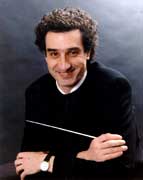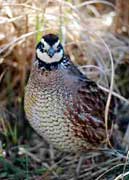 |
|||||||||||
|
Volume 13, Issue 10 ~ March 10 - 16, 2005
|
|||||||||||
|
|
They’re small on watts but big on heart By MaryLouise Wrabley A mystic, a mother, an activist, an actor: This diverse bunch and more are playing sounds and songs reflecting the spirit of your community. If you aren’t listening, maybe you should be. Homegrown radio is thriving in Chesapeake Country. Annapolis’ Radio Clay Street and, farther south, WRYR have different missions, but they share the challenge of mounting a daily radio show using talent from the community. In Annapolis, Clay Street Radio “The heart of the radio station is that it is all volunteers,” says Radio Clay Street founder and station manager Dennis Conti. Retired from a career in telecommunications, the 57-year-old Conti now fills his days volunteering at Stanton Community Center, where Radio Clay Street makes its home. His role also includes show promoter, technical advisor, trainer, show editor and programmer. Big as his job is, he has help from a half-dozen volunteer hosts who create the content for everything that airs except music, basing their shows on their interests within the goals of the station. Because Conti’s goals are to use the station to instruct, inspire and engage citizens, just about anything goes. So the programs are as diverse as their hosts. Check out Clay Street Radio, and you’ll hear that it is loaded with sundry music, sprinkled with an eclectic assortment of talk and music shows. But you’ll have to be quite close — within a quarter-mile to a half-mile radius — to listen; proximity is the low-frequency am station’s weakness as well as its strength. If you are driving downtown near Clay Street, listen in by tuning your radio to 1600am. Saturdays at 9am, you’ll hear Wyatt Cook, from Crofton, playing Jukebox Oldies. Fridays at noon, drummer Larry Griffin hosts Who’s Next Door, interviewing local talent, talking about local issues and playing a selection of world music. The Home Game, hosted by Connie Harold and aired periodically, takes good-neighbor themes with news about housing opportunities, including Habitat for Humanity and Homes for America. Mike Flanagan, a program volunteer at the Stanton Center, talks local and regional sports news on Sports Corner. One more program, Undiscovered Radio, “is about inspiration,” says host Chris Haley. Undiscovered Radio, with co-host Torra Williams, launched on Clay Street Radio last spring and is the audio version of Undiscovered TV, Haley’s local public-access cable television show. “The concept is to provide a platform for musicians to promote their talents to the community,” explains Haley. He also uses the show as a “training ground” for new and ambitious performers and as time for local people to enjoy new music — from Broadway to rap.
Community radio offers the opportunity to learn and make mistakes without fear. Haley relies on Conti for technical expertise and his ability to edit out mistakes — one of the values of pre-recording shows. Haley said he hopes the show inspires listeners to try something new. Radio is one more helping on Haley’s full plate. His day job is director of studies of the legacy of slavery at the Maryland State Archives. The nephew of Roots author Alex Haley adds to that a jam-packed schedule of acting gigs, play readings and black history talks. This spring, Undiscovered is on a temporary hiatus until the new Glen Burnie public access TV station is ready. Meanwhile, Haley is inventing another type of radio show. On Haley’s current Clay Street shows, you may hear Lt. Gov. Michael Steele chatting about his path to success with Haley and teen co-host (and godson) Steve Garrett. Garrett also plans to continue another interview show highlighting local successful teens. If Conti’s gig at Radio Clay Street works, there will be more shows featuring kids as hosts. “One of the original motivations is to have a facility for the kids,” explains Conti. He envisions shows where kids interview community leaders and develop their own public service announcements. While having fun, they’d hone their communication skills and explore new career possibilities. His aim is to get the kids to find a voice in community radio. Radio Clay Street — 1600am; no call letters — went live last spring under new Federal Communication Council regulations allowing unlicensed low-power radio stations on the am band. While the .1 wattage may be low, the technology is decidedly high. “We are more advanced than most radio stations; we are all digital and computer controlled,” Conti says. Interviews and music are recorded digitally and then programmed into the computer, which runs a scheduled play list 24 hours a day. Some shows are on regularly, some periodically. Conti wanted to apply for a Low Power fm license, but he just missed the FCC application window. Low-power am affords him a compensatory advantage: He doesn’t have to pay music royalties to The American Society of Composers, Authors and Publishers, Broadcast Music Inc. or The Society of European Stage Authors and Composers. The show-box size transmitter, mounted on a pole with a CB antenna, rises from the top of the Stanton Center. Another transmitter in Eastport brings broadcasting to public housing there. Future goals include transmitting to Parole and establishing a website. All sorts of music fills the program schedule: gospel, jazz, oldies, R&B and soul. Music is a big portion of the program schedule for both Radio Clay Street and its country cousin WRYR 97.5fmlp. Down South We Are Your Radio Adjust your dial to WRYR 97.5fmlp, and you’re likely to hear Chesapeake Country’s second homegrown radio station, which blends its flavor from Bay culture mixed with environmental activism. The three-year-old WRYR — licensed to the South Arundel Citizens for Responsible Development, or SACReD — is the first ever community radio station owned by an environmental organization. With a studio in Churchton and its broadcast tower across the Bay on the Eastern Shore, 100-watt WRYR tunes in for Bay shoreline communities in Anne Arundel, Calvert, Queen Anne, Talbot, Dorchester and Caroline counties — and sometimes Annapolis. To beat the low wattage, log onto WRYR.org and listen online through streaming technology. Grassroots activist Michael Shay pushed SACReD to apply for the low-power fm license. Shay says he sees the station as having two primary roles. The first is to “show a flashlight” on local government by recording and broadcasting public hearings. Citizens unable to attend hearings can be engaged in their government through radio, Shay says. Radio also allows the activist organization to “preserve community history.” Community radio also gives a “voice to the voiceless” through its diverse programming, Shay says. Chesapeake citizens “get to know and understand the community better” through developing and listening to shows. Like Clay Street Radio, WRYR is 100 percent powered by volunteers. Newest volunteer Michelle Corkadel of Shelby Bay says she saw the power of community radio firsthand when she noticed increased attendance at community meetings once announcements went out over the airways. Now, she’s using this medium to unite neighboring communities and give them a voice on issues affecting their environment. Corkadel will use her college radio experience to help station manager Chris Pokorski coordinate public service announcements. Carol Bennett, a retired NASA executive, has been on air longer. A few minutes before 9pm on Monday nights, host Bennett settles in at the control board and puts on a set of headphones. A combination of donated old and new equipment, the board intimidates some people. Not Bennett. Her voice is soothing, perfect for Chesapeake Moon, a call-in show exploring the mystical and supernatural. Looking for poetry and stories about the Bay region? Then take note of storyteller Tim Wisner’s Chesapeake Country, airing Sundays noon to 2pm, among other times.
Station manager Pokorski and program manager Phil LeCroy are proud of current and planned programming at WRYR. LeCroy trains hosts to operate the control board, to switch in CDs and to do live shows. He also trains volunteers to interview in the field, to cut straight to disk and to send it to the station via email. You’ll find these and some 50 other original shows — featuring music, poetry, environmental issues, community updates, family matters and a children’s music show — in WRYR’s program guide online at www.WRYR.org. Inside Track, Shay’s own show, focuses on community issues. Kevin Kamps and Diane D’Arrigo discuss nuclear issues affecting the environment on RadioActivism. WRYR is experimental in technology as well as in point of view. It’s Only Dark, a jazz, experimental music show produced by Eric and Ethan Hawk, is simulcast with low-power station KSJC-lp in Silverton, Colorado. Like Clay Street Radio, WRYR operates on the principal that radio is empowering as well as entertaining. So regular outreach and training are on the schedule, too, to better enable new hosts and reporters from as far east as St. Michaels and as far west as Crofton. Even with diversity the goal, new show demos are reviewed by a committee for approval. Most get approved, but not all last. “People don’t understand how much work is involved,” says LeCroy. Many drop out after they find out. WRYR’s annual operating budget is about $10,000, all donated by local businesses and individuals. The money’s needed, but the value of community radio isn’t monetary. Value is the immeasurable dedication of local volunteers pulling together for common goals. “All citizens should take advantage of community radio,” Haley says. For it isn’t the number of watts that determines a community station’s power. Power is a multiple of the voices of its makers times the ears of its listeners.  Beetle Bust Beetle BustChina Crafts Banned After Maryland Invaded by Sandra Olivetti Martin Score one for the home team in the fight against hitchhiking invasive species, the kind you don’t want visiting your trees. Acting after a Maryland discovery of wood-boring beetles that can devastate forests and backyard hardwoods, the U.S. Department of Agriculture banned imports of Chinese-made crafts and other goods made from raw wood. The department’s Animal and Plant Health Inspection Service sent letters late last month to Maryland and other states saying that the government had formally notified China that imports of products with bark would be prohibited at U.S. ports starting April 1. The government made its preemptory stride after its fourth recall in six months of Chinese-made goods that were infested with beetles related to pests that had caused serious damage in several states. Maryland’s Agriculture Department confirmed to Bay Weekly that an Ellicott City homeowner discovered one of the invasive beetles after bringing home a cute little artificial Christmas tree with a real-wood trunk. When a bug climbed out, the owner decided the tree was a little too lifelike. Alerted to the potential danger by reading Ask the Plant Professor — questions and answers distributed to newspapers by the University of Maryland Cooperative Extension Service — the homeowner called the state Agriculture Department. The department confirmed the find — which was by then dead and frozen — and brought back the tree for closer examination. Cutting into the tree, state Agriculture experts found a live boring beetle, said Carol Holko, acting chief of plant protection. Like many of the recent finds, the pests, brown fir long-horned beetles, were discovered on Chinese-made trees. Government officials believe that the Christmas trees, like other Chinese wooden crafts, were not kiln-dried at sufficient heat to kill the pests. Why is the government so worried about a few bugs? Taxpayers have spent more than $200 million to combat just one pest, the Asian long-horned beetle, a voracious wood-borer that has established colonies from Illinois eastward. Maryland officials hope to avoid that kind of colonization. “If you buy an Asian craft item, you see something live crawling around,” Holko said. “It’s a good idea to let us know.”
“He brings us passion,” agreed Steven Barzal, another member of the search committee. “José is remarkably attentive to ensemble playing,” said Barzal, who is also the orchestra’s principal horn player. Barzal discovered Novo’s passion firsthand, playing with him in the first concert of the 2004-’05 season, the new conductor’s trial by music. “He coaxes a wonderful sound out of an orchestra; we reached a higher level immediately.” The rapport was instant and mutual, making Novo the unanimous favorite of the search committee. “José inspires the musicians to rise to an exciting new level,” said principal cellist Denise Nathanson, another search committee member. Nathanson says that even novice listeners will hear — though they may not be able to define — the differences he brings out in the orchestra. “It’s almost like being on a blind date,” Novo said of his new orchestra. “There’s already good chemistry between the orchestra and me. Now we have to build up our relationship so that the music we’re making keeps getting stronger.” It’s the passion between orchestra and conductor as much as the music, he thinks, that will attract audiences as they “pick up on it.” In choosing Novo, the searchers were banking that his rapport with the musicians would extend to local audiences. “He understands that the tastes of Annapolis are not too avant-garde,” said D’Amato. “He will bring the audience in and make the Annapolis Symphony more cutting-edge by adding in fresh material along with more traditional pieces.” Already, Novo shares other local tastes. He loves water and seafood, he said, and looks forward to being out on the Bay. In fact, he likes the area so well that he and his wife, a flautist, are considering moving here from Cincinnati. But that’s in the future of a relationship that has four years, the term of Novo’s contract, to flourish. Now it’s just the second date. You can hear if the music is sweet in a pair of concerts May 6 and 7. It’s a celebratory performance of familiar, passionate music: Schubert’s Unfinished Symphony, Wagner’s Flying Dutchman and Dvorak’s New World Symphony. Over next year’s season, Novo said, “we’ll be getting to know each other and the audience and exploring our new relationship. I think a lot can happen in one season.”
PRUNING CRAPE MYRTLE (Part I) In Annapolis, environmental groups must think the gubernatorial election is this year rather than in ’06. A coalition of advocacy organizations is sponsoring a radio ad criticizing Gov. Robert Ehrlich’s ill-fated plan to review state land holdings for potential sales. The ad features the voice of a child prevented from playing baseball on parkland because of the arrival of a bulldozer and then a gas station … |
||||||||||




 New Conductor Novo Brings Nearly Divine Passion to Annapolis Symphony
New Conductor Novo Brings Nearly Divine Passion to Annapolis Symphony
 Bringing Back Bobwhite
Bringing Back Bobwhite

 al poaching of the rare Patagonian toothfish — branded the Chilean sea bass by savvy seafood marketers. Just one boatload of the delectable fish, known for its flaky white flesh and buttery flavor, can bring $4 million, Reuters reports. No wonder the toothfish is called “white gold”…
al poaching of the rare Patagonian toothfish — branded the Chilean sea bass by savvy seafood marketers. Just one boatload of the delectable fish, known for its flaky white flesh and buttery flavor, can bring $4 million, Reuters reports. No wonder the toothfish is called “white gold”…